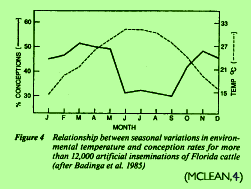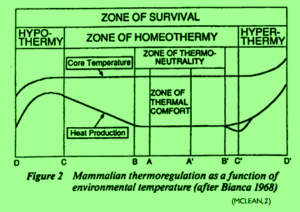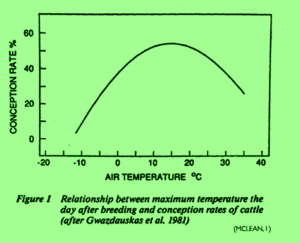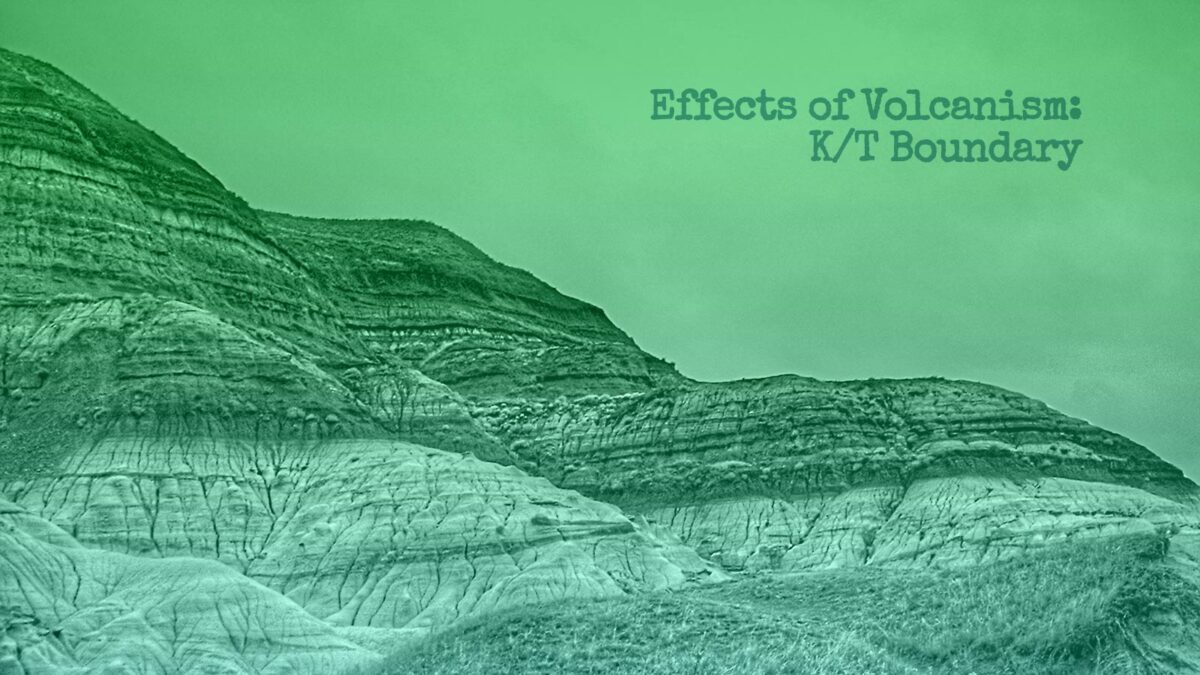The main effect of volcanism was emissions of toxic greenhouse gasses, gasses whose presence in the atmosphere created problematic conditions that threatened Earth’s varying species. Gaseous toxic emissions over time raised atmospheric levels to extremes that contributed to the extinction of the Dinosaurs. Volcanism had been the cause for mass extinction many millions of years before the Dinosaurs, and numerous large volcanic events around the K/T boundary caused the death of yet another species, 65 million years ago.
written November 16th, 2005 || Terms, Definitions & Outline for this article are provided here… –Excessive Volcanism Terms, Definitions & Outline
The continuous periods of excessive volcanism that occurred around the K/T boundary had numerous effects upon the Earth’s atmosphere and climate, effects that greatly influenced global habitability.
Volcanic activity was abundant during the Cretaceous-Tertiary period. Though determining the exact age of volcanic remnants is difficult, nine centers of volcanism are thought to have been active at the K-T boundary. Southern Atlantic, southern Africa, and eastern South America, are all thought to have hosted large volcanic events that lasted for millions of years. The rising Ancestral Rocky Mountains atop the North American plate, and Deccan Traps on the South Western coast of India also contributed to a period of volcanic abundance beginning 68.5 million years ago, lasting until 64.9 million years ago.

As plate tectonics carried Pangaea’s broken pieces towards their current continental positions, continuous subduction, and motion beneath the Earth’s crust offered the intensity and frequency of the volcanic events throughout this period. As plate subduction occurs, one plate beneath another, oceanic crust and the Lithosphere melt as they descend into the Asthenosphere. The melted rock becomes magma, and its heat gives cause to rise and in certain areas the crust is breached, heat and magma escaping into the atmosphere above continental crust. Heat from the Earth’s interior escapes more substantially in certain volcanic areas than others. These hot spot areas frequently erupt and release large amounts of magma and gasses contained by giant sub-surface volcanic plumes.
Stemming from the deep depths Earth’s interior, thin straws of molten rock ascend towards the mantle. These canals rise towards the crust carried by their heat; whereat decreased levels of pressure allow large chambers beneath the surface to form. The rising magma, no longer contained by high pressure, melts surrounding rock, and forces layers of crust upward, eventually causing fractures. An area of volcanic activity, whose magma breaches the crust and erupts upon the Earth’s surface, is called a hot spot. Plumes form slowly, often taking several million years to finally reach the crust. Cracks in the Earth’s surface are the vents from which lava flows, and where its previously contained gasses are introduced to the atmosphere. Often termed “India’s Smoking Gun,” the Deccan Traps occurred as one such hot spot, leaving behind hundreds of thousands of cubic miles of flood basalts where present-day India’s southeastern boarder meets the sea, the Western Gats.
The eruptions at the K/T Boundary were so large scale that the ash from a single Deccan trap eruption caused an initial cooling of 5-9O (F) decline in atmospheric temperature. The Deccan Traps alone are estimated to have produced 33 trillion tons of Carbon Dioxide, 6.6 trillion tons of sulfur, 66 billion tons of chlorine and fluorine molecules. Eruptions throughout this period were thought to be short volcanic events, several days long at most. Stephen Slelf, amongst other gradualist geologists, conversely argues that individual eruptions lasted over a year producing the immense amounts of flood basalt that were discharged atop present day India. Guatam Sen uses Hawaiian volcanic evidence and numerous mathematical calculations to estimate the length of volcanic activity at the Deccan Traps.
“I estimate the eruptive duration for the WG [Western Ghats] lava pile by dividing its volume (136,000 km 3) by the 0.031 km 3/yr eruption rate. For this I have assumed a length of 400 km, width of 200 km, and thickness of 1.07 km for the WG sequence. These are reasonable figures, since the WG stratigraphy is exposed and has been mapped along a 450-km length… and the thickness of the basalts is closer to 1,700 m over a “< 200 km width (measured across the Ghats), while farther east the lava pile progressively thins. Therefore the volume figure is quite conservative. I have not included the substantial volumes to the east of the main axis of the WG. Considerable volumes of the basalts are in the subsurface underneath the WE axis (as much as 500 M thick in places)… My minimum eruptive duration estimate for the WG is 4.39 million years” (Sen, 484).
As extended eruptions continued to take place, atmospheric temperatures were constantly in flux; ash blocked out the sun while greenhouse gasses slowly warmed the planet. The Deccan Traps and other volcanic areas of prolonged activity continued sending substantial amounts of Carbon Dioxide, Sulfur, Chlorine, and Fluorine molecules into the atmosphere.
One affect of volcanism and greenhouse gasses is acid rain. Acid rain was problematic for species, especially herbivores, living along coastal regions and near volcanically active areas. Hydrogen chloride and hydrogen fluoride molecules, after being released into the biosphere at hot spots, rise into the air to combine with moisture in the air. When the gasses have been suspended within water molecules, acid rain falls to the Earth, devastating what lay below on the continental crust and tainting bodies of water.

Greenhouse gasses raise the temperature of Earth’s atmosphere by absorbing the heat of the sun’s radiation. Carbon Dioxide levels rose to eight times that of our modern atmosphere during the late Cretaceous period, and as result, the Earth’s temperature rose 9O (F). The surplus of toxic gasses within the atmosphere, aside from warming, had other effects upon the biosphere of the late cretaceous. Carbon dioxide, a prominent and controversial greenhouse gas today, has always threatened species with increasing atmospheric levels. Earth’s biosphere employs mechanisms of greenhouse gas absorption, though high levels of gasses can override nature’s ability to keep the atmosphere composition at habitable proportions.
Large bodies of water, typically oceans, absorb oxygen and carbon dioxide molecules from the atmosphere. This process occurs at the water’s surface, where coccolithophorids and other microscopic organisms reside absorbing carbon dioxide and oxygen from the atmosphere, transformed in a process of carbonic mineralization. Coccolithophorids’ skeletons fall to the ocean floor, where their accumulation forms calcium carbonate. Aside from a check and balance for atmospheric pollutants, this ‘Carbon cycle’ also provides the creatures of the sea-bottom hospitality in shells formed by this accumulate. As atmospheric levels of CO2 rise, oceans will continue to absorb greenhouse gasses, though exceeded finite levels, beyond which lead to adverse ecological affects, occur over time.
“When CO2 dissolves in seawater it forms a weak acid, called carbonic acid… This dissolution of CO2 has lowered the average pH of the oceans by about 0.1 units from pre-industrial … Such a value may seem small but because of the way pH is measured… this change represents about a 30% increase in the concentration of hydrogen ions, which is a considerable acidification of the oceans. Increasing atmospheric concentration of CO2 will lead to further acidification of the oceans.” (The Royal Party, 9).
Carbon dioxide levels greatly exceeded that of our industrial Earth during the late Cretaceous as abundant gasses caused ocean acidity. This acidic increase inhibited coccolithophorids from properly mineralizing carbon dioxide and oxygen, and calcium carbonate became accumulated in diminishing quantities leaving the creatures at the bottom of the ocean, low and wet. Acidic properties of the aqueous environment detrimentally affected all marine life. Bimolecular processes were deterred, as gradual “narcotizing acidosis” led to the surmise of many marine species, namely the microorganisms key in absorption. The oceans of the late Cretaceous had reached a point at which carbon dioxide was no longer affectively absorbed. The Earth’s biosphere was left with one less mechanism to control greenhouse gasses, and levels subsequently continued to rise.
Rise in global temperature, give or take 9O F, could have presented species with reproductive problems. Thermoregulation influences species’ bodily processes in attempts towards stasis of body temperature when air temperature is above or below a comfortable level. Balancing physiological functions such as thermoregulation can exert organs, leave others unattended, or alter necessarily static conditions. A popular theory for extinction by volcanism states that air temperatures rose to levels that detracted blood flow to key organs in pregnant female dinosaurs, destroying embryos.

“In protecting the adult female from high environmental temperatures, the shunting of blood to superficial tissues and respiratory muscles reduces perfusion of blood to the abdominal viscera, nonrespiratory muscles, and reproductive tract… Uterine blood flow (UBF) is a developing embryo’s source of oxygen, nutrients, water, and hormones… and also transports damaging heat away from the embryo” (McLean, 3).
Such methods or thermoregulation have been proven in mammals, reptiles, birds, and extended to the dinosaur species. And though it’s impossible to pinpoint atmospheric temperature of a sub-tropical environment 65 million years ago, it’s not hard to imagine high temperatures to cause such bodily functions. The Uterus is a sensitive organ and even the slightest shift in bodily temperature can destroy an embryo.
“To prevent damage to developing embryos, the uterine tract must be maintained at a nearly constant and optimum temperature. A rise of uterine temperature by only 1.8-2.7o F (1.0-1.5 o C) above optimum will kill an embryo. Generally, European-type lactating cattle can maintain homeothermy [static core temperature] up to about 70-81o F (21-27 o F), above which the core temperature begins to rise. At air temperatures of about 86o F (30 o F), the core temperature significantly reduces conception rates… based on breeding records for more than 12,00 Florida cattle… shows that conception rates of lactating cows decrease sharply when the maximum air temperature on the day after insemination exceeds 86o F (30o F).” (McLean, 3).
Relatively quick, though strong volcanic events (500,000 years), within extended periods of volcanism, would have produced sufficient atmospheric pollutants and high temperatures to interfere with reproduction.

Climactic shifts approaching the K/T boundary caused biosphere disruptions impeding species’ life on Earth. Volcanism actively in motion below the crust’s surface created numerous hot spots whose greenhouse gasses rose atmospheric temperature and influenced global climate shifts. Climactic instability caused region specific alterations in weather patterns and global fluctuations in the ecosystem. Volcanism began to produce immense amounts of greenhouse gas that natural cycles of absorption could no longer moderate. Ever-rising levels of atmospheric pollutants hovered above the continents and oceans, their impending heat and toxicity eventually disabling the mechanisms that once insured balance to a habitable planet. Greenhouse gasses continued to built-up within the atmosphere and temperatures rose, presenting species’ reproductive organs the challenge of functioning in adverse environmental conditions.
Acid rain was deleterious to plant life, and as sea creatures on the bottom of the ocean were left with fewer hospitable resources (CaCO3), so too were herbivores, their means of survival often deduced to dead plant matter and infertile stretches of land. Embryos were deformed domestically by their mother’s internal regulation of the core, an organism’s physiological response to warm climates; a natural response with consequences fatal to newly formed embryos.
These effects of volcanism were similar to those of the late Paleozoic period, amidst the Siberian eruptions, whose effects were so powerful that 90-95% of all Earth’s species became extinct. Many believe volcanism to be the mechanism for mass extinction as the Cretaceous period became the Tertiary. Species have adapted over hundreds of millions of years to meet specific aspects of their climate. Earth changing events such as that causing the mass extinction of the late Paleozoic, illustrates the possibility that volcanism’s gradual destructive powers upon ecosystems can transform balanced biospheres into uninhabitable environments resultant in the extinction of entire species.
Works Cited
Archibald, J. David. Dinosaur Extinction and the End of an Era. New York: Columbia UP, 1996.
Dingus, Lowell, and Timothy Rowe. The Mistaken Extinction. New York: W. H. Freeman and Company, 1998.
Fastovsky, David E., and David B. Weishampel. The Evolution and Extinction of the Dinosaurs. New York: Cambridge UP, 1996.
McLean, Dewey. A Climate Change Mammalian Population Collapse Mechanism.
From: HYPERLINK “http://filebox.vt.edu/artsci/geology/mclean/Dinosaur_Volcano_Extinction/pages/clim_chg.pdf”
McLean, Dewey. The Deccan Traps Volcanism-Greenhouse Dinosaur Extinction Theory.
From: HYPERLINK “http://filebox.vt.edu/artsci/geology/mclean/Dinosaur_Volcano_Extinction/pages/studentv.html”
Royal Society, The. Ocean acidification due to increasing atmospheric carbon dioxide.
From: “http://www.royalsoc.ac.uk/displaypagedoc.asp?id=13314”
Sharpton, Virgil L., and Peter D. Ward. Global Catastrophes in Earth History. Boulder, CO: Geological Survey of America, 1990.

